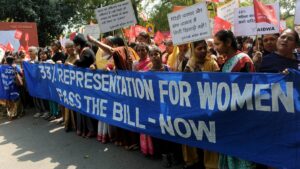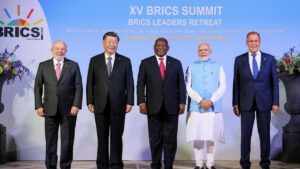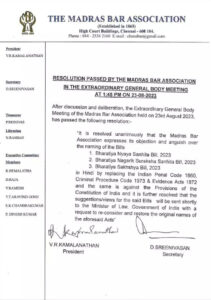India
Settling has its advantages. It provides quicker compensation that can help cover medical bills and lost wages without enduring a lengthy trial process. However,…
On September 22, 2024, the Supreme Court extended an earnest…
The National Medical Commission (NMC) has won the prestigious World…
In light of Prime Minister Modi’s brief interaction with Chinese Premier XI Jinping at the…
The Madras Bar Association’s objection to the proposed renaming of crucial legal statutes marks a significant development in India’s ongoing debate over linguistic representation and adherence to constitutional principles. The association’s concerns primarily revolve around the proposed Hindi names for the Indian Penal Code (IPC), Code of Criminal Procedure (CrPC), and the Indian Evidence Act, which it believes could potentially violate the spirit of the Constitution.
The heart of the Association’s objection lies in the choice of names for these bills. The transition from English nomenclature to Hindi, while aimed at promoting linguistic harmony, has raised apprehensions about potential constitutional violations. The Association contends that renaming these laws in Hindi contradicts the Constitution’s provisions safeguarding linguistic diversity, cultural inclusivity, and equitable representation. This issue brings forth a larger concern about striking a balance between linguistic identity and constitutional values.
The Association strongly advocates for retaining the existing English names of these legal statutes. It argues that these names have become deeply rooted in the legal community and reflect India’s historical connection with English common law. This consistency in nomenclature supports effective communication within the legal ecosystem and maintains continuity in legal proceedings and scholarly discussions.
The timing of the bills’ introduction by Union Home Minister Amit Shah during the Monsoon Session of Parliament further adds to the complexity of the debate. These proposals are now in the hands of the Parliamentary Standing Committee, which will evaluate their alignment with constitutional principles. The fate of these proposed name changes hangs on the Committee’s recommendations.
This debate underscores the challenge India faces in reconciling linguistic diversity with constitutional values. While promoting Hindi as a unifying language is commendable, it must be done in a way that respects the nation’s rich linguistic tapestry. The Madras Bar Association’s objection highlights the significance of interpreting linguistic changes within the broader context of constitutional norms.
From a law student’s perspective, this situation offers a firsthand look at how legal principles, including constitutional ideals, can evolve over time. It showcases the interplay between language, culture, and the legal framework. Aspiring legal professionals can gain insights into how linguistic shifts impact legal practice and the justice system as a whole.
At the core of this controversy lies the Indian Constitution, serving as a guiding force that shapes the nation’s ethos. The Madras Bar Association’s objection emphasizes the Constitution’s role in safeguarding linguistic and cultural rights. This situation serves as a reminder that any legal transformation must be carried out while upholding the Constitution’s spirit.
In conclusion, the Madras Bar Association’s stance against renaming key legal statutes in Hindi reflects a broader concern about striking a balance between linguistic representation and constitutional harmony. The association’s call to preserve established English names underscores the importance of maintaining legal continuity while embracing linguistic diversity. As the bills await evaluation by the Parliamentary Standing Committee, India watches closely to witness how the nation navigates the intricate intersection of language and law, guided by the principles enshrined in its Constitution.
First Glimpse of ‘Jaane Jaan’ teaser reveals Kareena Kapoor’s debut on digital platform; co-starring Vijay…
In an unfortunate convergence of man-made encroachments and the unrestrained force of nature, Punjab finds…
After the successful landing of the Chandrayaan-3 lander module on the south pole of the…
In a momentous ruling, the Supreme Court of India has once again asserted the vital principle of organizational autonomy regarding the determination of employees’ superannuation age. The case of “Central Council for Research in Ayurvedic Sciences v. Bikartan Das” has spotlighted the authority of institutions to set retirement ages, presenting a particularly intriguing context of parity with AYUSH doctors.
The essence of the dispute revolved around Bikartan Das, an employee of CCRAS, who pleaded for an extension of his retirement age to 65, citing his dedicated medical service. This plea was juxtaposed against the Union Cabinet’s decision to increase AYUSH doctors’ superannuation age. However, the court noted that this extension did not encompass autonomous bodies like CCRAS.
The crux of the interpretation hinged on the language of Clause 34 of CCRAS’s Bye-Laws, dissected meticulously by the Supreme Court. The court emphasized the term “or,” affirming the Council’s right to independently formulate superannuation policies, distinct from government norms.
Central to the verdict was the upholding of organizational autonomy in setting internal policies, particularly superannuation age. The court, while recognizing its role in curbing arbitrary decisions, underscored that organizations possess the ultimate authority in this realm. Justice Pardiwala highlighted, “The age of superannuation is always governed by statutory rules & other service conditions.”
The court also highlighted the dissimilar service conditions of Bikartan Das and AYUSH doctors. It dismissed the assumption that treating patients in diverse departments inherently merits parity in retirement age. The ruling reinforced the principle that parity should consider broader service conditions and recruitment nuances.
The ramifications of this ruling resonate widely, underscoring organizations’ autonomy in framing policies, including retirement age. It establishes a precedent for interpreting similar clauses in organizational bye-laws, possibly discouraging uniformity challenges that overlook contextual discrepancies. Moreover, the verdict fortifies the legal foundation for organizations to independently frame policies without adherence to government-established norms.
Ultimately, the Supreme Court’s judgment in the Bikartan Das case champions organizational autonomy in determining superannuation age. This landmark verdict extends beyond the specifics, encapsulating a fundamental principle that safeguards organizations’ freedom in shaping internal policies. Its echoes are destined to reverberate across industries, ushering in an era where organizations wield greater control over their core operations and identity.
Web Stories
Latest Posts
Contact us:
online@asianatimes.com
Copyright © 2024 Asiana Times. All Rights Reserved























